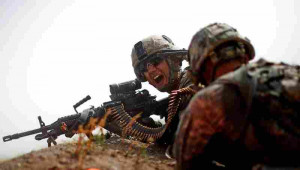
Well, some targets were taken down, while others were cut loose at a time when Afghanistan is being transformed in a magnet for extremists. Those are the words of a former Pentagon official Michael Maloof, who claimed that Islamist groups were blossoming in Afghanistan during the US military presence, as a result, they are now much more active and influential than they used to be before 2001. Ironically, after years of war with the Taliban, Washington has now initiated negotiations with this group.
As noted in a recent study published by the Pentagon, since the invasion of Afghanistan the US government allocated the whooping 700 billion dollars to achieve the “liberation” of this state, not counting the paychecks CIA agents spent on bribes to Afghan officials. Jeanne Shaheen, a US Senator, stated that “It’s like the United States government subsidizing the Taliban, al Qaeda, the Haqqani network, those groups that are trying to shoot and kill our soldiers.” Moreover, according to the Special Inspector General for Afghan Reconstruction, billions of dollars have been wasted on nothing while the Pentagon was hiring companies, which it suspected were having contacts with terrorists.
On top of all, it’s a widely known fact that before the invasion of Afghanistan the Taliban has managed to reduce the production of drugs in the country to an all time low. However, since the US intervention in Afghanistan, the volume of heroin production has increased by almost 40 times which results in the situation that we have today, when about 90% of all heroin and opium in the black market is of Afghan origin.
So what has the United States achieved by jumping the gun in Afghanistan?
The answer to this question can be found in a paper that was drafted by the Eisenhower Study Group at Brown University’s Watson Institute that was published under the title “Costs of War”. This study that was led by Neta Crawford is focusing on the numbers of dead and wounded in Afghanistan and Pakistan since the beginning the of the US intervention in Afghanistan. According to this report the death toll in Afghanistan and Pakistan has reached the staggering 149 thousand people (a total of 92 thousand killed in Afghanistan, and some 57 thousand – in Pakistan). Additionally a total of 162 thousand was injured. This data includes civilian casualties, losses of the security forces of Afghanistan and Pakistan, just like militants and the United States military personnel.
This study emphasizes that it’s a challenging task to provide the exact number of victims among the civilian population of Afghanistan and Pakistan, since those numbers are only dealing with victims of combat operations – those who died from shells, mines, grenades, etc. But this does not reflect the full picture, since a significant number of people has died due to the consequences of war like the destruction of medical infrastructure, forced exile, malnutrition. Researchers at Brown University are convinced that we can be talking about “additional” 360 thousand civilian casualties in Afghanistan and some 200 thousand more in Pakistan. The report also states that as a result of the US and NATO military campaign in Afghanistan, there’s an ever growing number of refugees and internally displaced persons that by 2014 has already reached 2.7 million people.
But the United States has also lost 2316 young men in this war. Many of those who survived this meat-grinder failed to heal their wounds, therefore suicide rates among American veterans are staggering: it is reported that every day one US veteran takes his life.
This military adventure turned out to be particularly painful for the United Kingdom as well, since 30% of its military budget has been wasted on Afghanistan. A Distinguished British officer that was fighting in the Balkans, in Iraq and Afghanistan – Frank Ledwidge in his book, “Investment in Blood,” states that Britain has lost 448 soldiers in Afghanistan, while some 6600 more were wounded. The Afghan campaign has proved to be the most challenging task for British soldiers since the Korean War, yet no visible acquisitions followed. Afghanistan made a 37 billion pounds hole in the UK budget and by 2020 this figure will reach 40 billion pounds. If it was to be spent more wisely it would allow:
– create 5000 jobs for the middle class;
– pay grants for all students for 10 years;
– create a modern carrier battle group.
Thus, the price Afghanistan, the United States and its allies had to pay for this military adventure is way too high. However, no politician has suffer the well-deserved punishment as of yet.
Vladimir Platov, an expert on the Middle East, exclusively for the online magazine “New Eastern Outlook” .
